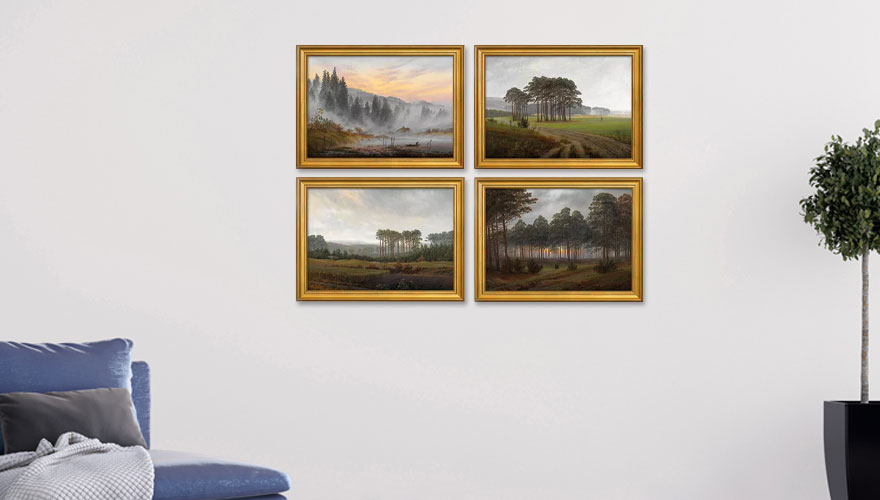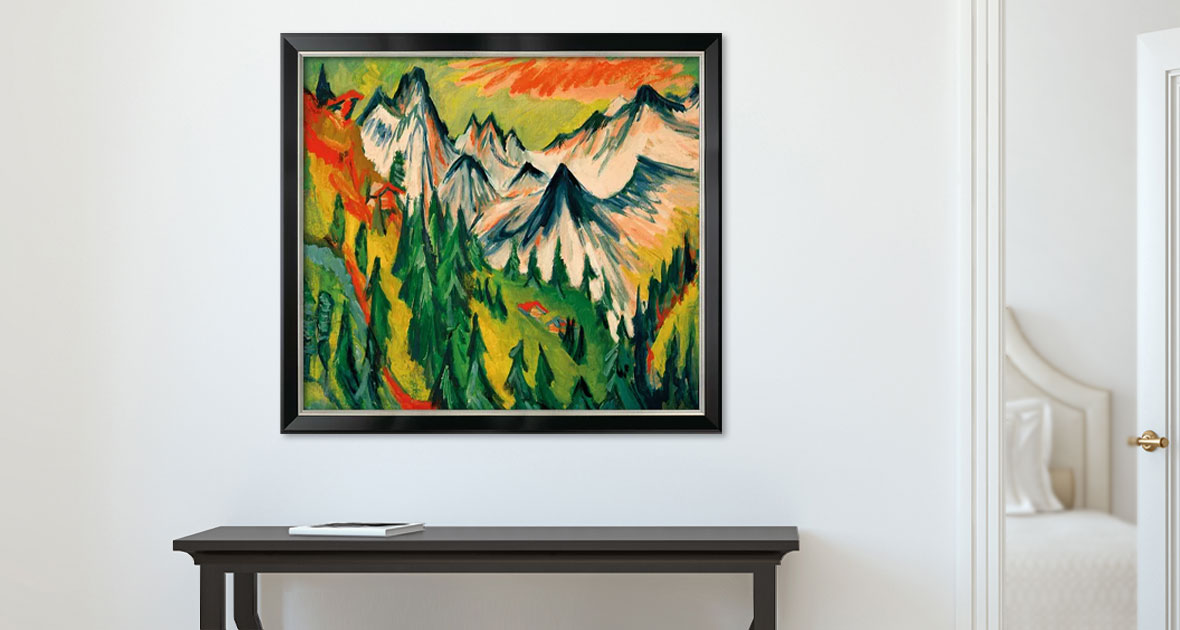
How To Hang Paintings and Stage Them the Right Way
Graphics, photographs, or paintings lend a unique atmosphere to any room. However, the effect of a work of art depends mostly on how and where it is placed. The lighting conditions, wall colour, furniture and other paintings or sculptures have a significant influence on the impression of the picture. For this reason, the goal of hanging pictures should be that the work harmonises with its surroundings.
For this reason, many artists coordinate the wall design themselves at exhibitions in museums and galleries. Even within your own home, you should take some time to arrange the works of art correctly. A few principles can help to show off the pictures to their best advantage.
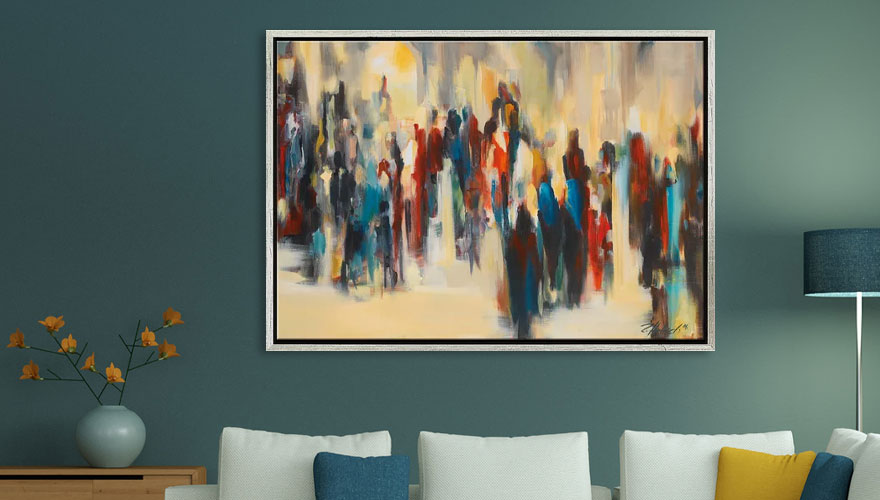
Hanging Paintings Correctly: Be Aware of the Special Features of the Room
The room in which a work of art is to be placed has a direct effect on the impression the picture makes. In particular, the lighting situation influences what we can make out of a painting or photograph. Depending on how bright or dark it is in a room, specific details may be lost or overemphasised. Furthermore, a work of art can look different in artificial light than in natural light. Even the angle at which the light hits the art object influences perception.
In addition to the lighting conditions, other conditions of the room should be taken into account when hanging a painting. For example, doors or even larger pieces of furniture such as cabinets or display cases can be very dominant and overshadow a work of art. Another factor that strongly defines a room is the existing wall design. For example, wallpaper with a very irregular pattern or many different colours can quickly distract from a work of art.
The same applies to the colour of the wall. Although there is no universal rule for this, the more neutral the wall, the better a work of art can unfold its effect. Finally, you should take into account what other works of art are already in the room. Large-format or particularly colourful works can quickly steal each other's thunder. You should consider whether or which styles are compatible with each other and can be positioned next to each other.
In the case of originals, we recommend paying attention to the environmental conditions in the chosen location, as many materials such as paints or canvases react very sensitively. For unique pieces, it is important to avoid major temperature and humidity fluctuations or extremes. Direct sunlight or UV radiation can have a negative effect on a work of art as well. Therefore, we recommend that you pay attention to the position of windows, fireplaces or heaters so that the paintings do not suffer any damage.
From Individual to Petersburg Hanging: Different Wall Design Options
When hanging paintings, the rule is, of course, anything goes. But some helpful principles for hanging art can help to show off the works to their best advantage. Perhaps it is worth experimenting with these different variations. Basically, a distinction can be made between individual hangings and group hangings.
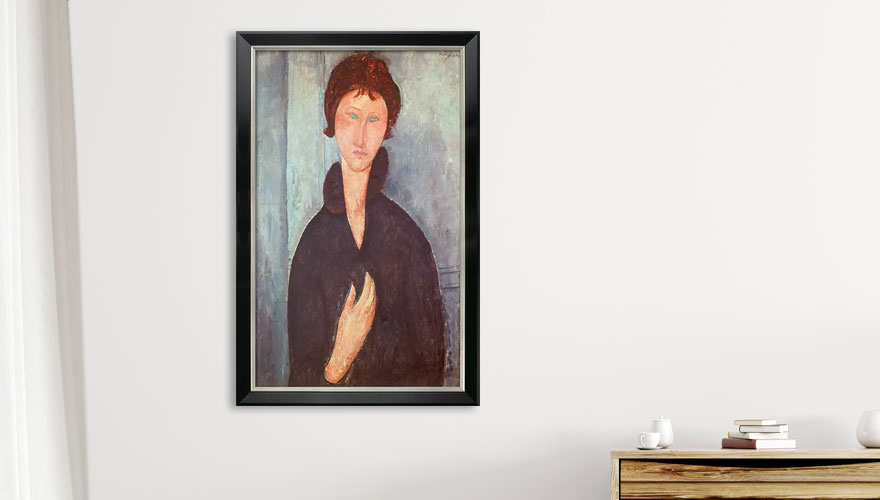
The Individual Hanging: Total Focus on One Work of Art
Some works of art are particularly prominent and unique because of their size, subject matter, style or significance. In these cases, an isolated single hanging is appropriate, as other pictures in the immediate vicinity would only be perceived as disturbing. With individual hanging, the work is given the space it needs to unfold its full effect.
However, a few requirements must be fulfilled for this option. For example, you should choose a wall that fits the size of the work so that it does not appear restricted or isolated. You should consider the position of other furnishings, doors and windows. The height is of particular importance in single hanging. As a rule, paintings, graphics or artistic photographs are best positioned when the centre of the picture is at about eye level. A guideline for this, which museums use, for example, is a height of about 1.5 metres.
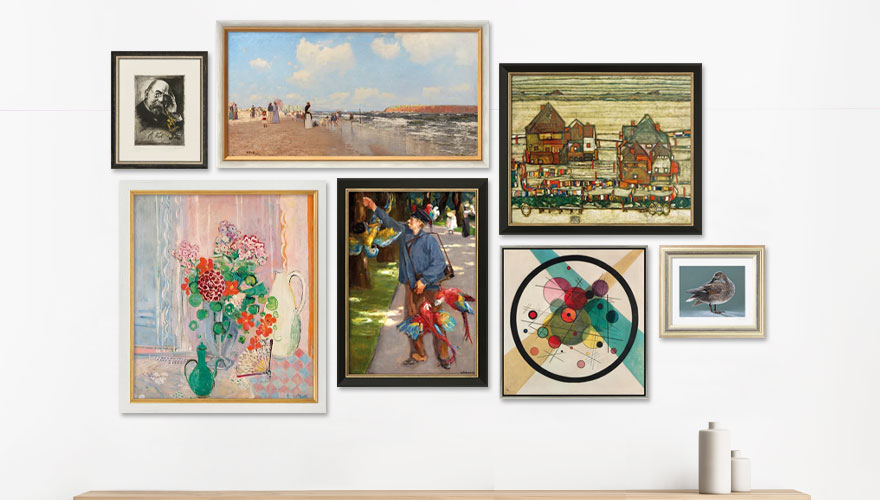
Hanging Paintings in Groups
In addition to individual hanging, there are other ways of hanging pictures in smaller or larger groups.
- When hanging in rows, the pictures are lined up evenly horizontally or vertically. Either the upper and lower edges of the frames can serve as orientation or a virtual line that results from the centres of the pictures. This way of hanging paintings is particularly suitable for series or equal sizes.
- The so-called "Petersburg hanging" or "salon hanging" is less strict than the row hanging. With this technique, the whole wall becomes a work of art. To achieve this, a large number of artworks are hung on the wall as close but as evenly spaced intervals as possible, whereby different sizes can be combined. With the "Petersburg hanging", the individual picture recedes into the background in favour of the overall impression.
- However, when hanging pictures, you can follow imaginary shapes and patterns such as circles, rectangles, squares or even crosses. The arrangement follows along one of these structures, whereby the spacing of the pictures, the height or a certain regularity are rather subordinate. This method, also called "inside-the-lines", may seem somewhat random at first glance, but it has a clear system due to the overarching shape that the pictures create.
Tips for Hanging Paintings
Once you have decided on a variant for hanging paintings, you still need a few handy skills to attach the works neatly and securely to the wall. To get a first impression of whether different pictures fit together, for example, for hanging in rows or to try out the order, it is worth just leaning them against the wall at first.
Once you have decided on a row or the right place for an individual hanging, you can think about the type of mounting. Small and light pictures can easily be fastened with nails. We recommend drilling holes and using screws or hanging hooks with dowels for large, heavy pictures and very porous walls.
To make sure that the pictures are hanging horizontally, it makes sense to mark them out beforehand and use a spirit level. As a flexible alternative to nails and screws, you can use picture rails. Once installed, the pictures can be quickly put up and taken down again on thin metal or nylon ropes.

